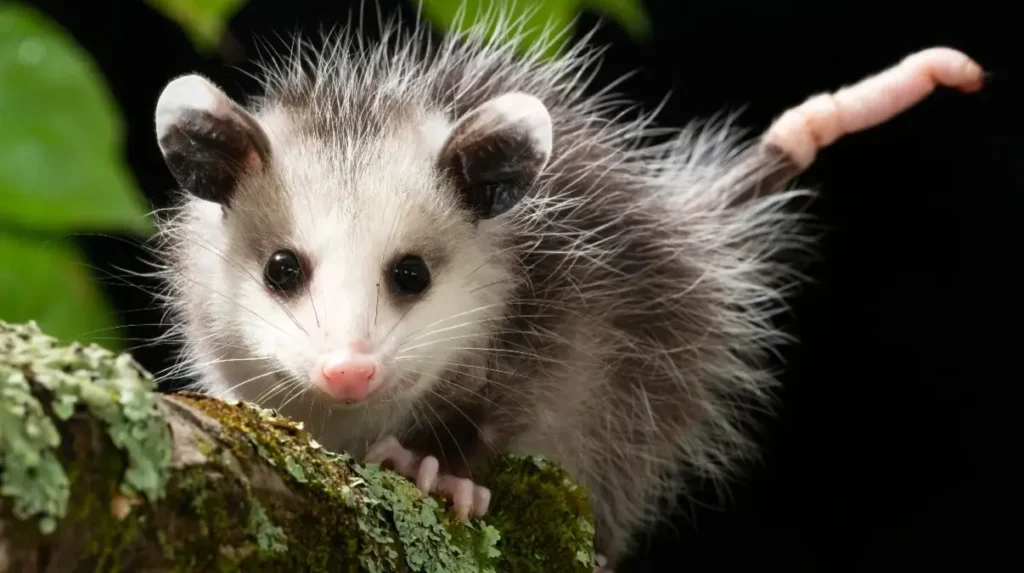Introduction to the Tnacuache
Welcome to the fascinating world of the tnacuache! Often overshadowed by more popular wildlife, this unique marsupial has many secrets waiting to be uncovered. With its charming appearance and intriguing behaviors, the tnacuache is a creature that deserves our attention. Whether you’re an animal enthusiast or simply curious about nature’s wonders, you’ll find plenty to love in these ten amazing facts about the tnacuache. Get ready for a journey into their extraordinary lives!
Origin and History of the Tnacuache
The tnacuache, also known as the opossum, has a fascinating origin that traces back millions of years. This marsupial is believed to have evolved in South America before reaching North America.
Fossil evidence suggests these creatures roamed the Earth long before many other mammals. Their adaptability allowed them to thrive in diverse environments.
Throughout history, various Indigenous cultures have recognized the tnacuache for its unique traits. In some traditions, it symbolizes survival and resilience due to its ability to play dead when threatened.
As settlers moved into new territories, they encountered this peculiar animal with an unusual appearance and behavior. Its nocturnal lifestyle piqued the curiosity of early naturalists who studied its habits extensively.
Today, the tnacuache remains a testament to nature’s ingenuity and continues captivating those who take the time to learn about this remarkable creature.
Physical Characteristics and Habitat
The tnacuache, often known as the opossum, showcases a fascinating blend of physical traits. It has a pointed snout and large ears contribute to its keen sense of hearing. Its fur is typically grayish or brown, offering camouflage against natural surroundings.
These creatures possess prehensile tails, an impressive adaptation for climbing and grasping branches. This ability allows them to navigate their forested habitats with ease.
Tnacuaches thrive in diverse environments, from woodlands to urban areas. They are primarily nocturnal, making their homes in tree hollows or shrubs during the day. With a preference for temperate climates, they can be found across North America down into Central America.
Their adaptability enables them to live close to human settlements while maintaining their wild instincts. Whether rummaging through gardens or exploring forests, tnacuaches are versatile survivors in various ecosystems.
Diet and Eating Habits
Tnacuaches, also known as opossums, have quite the diverse palate. Their diet primarily consists of fruits, insects, and small animals. They are not picky eaters; they consume almost anything they can find.
These creatures play a crucial role in their ecosystem by helping to control insect populations. They feast on ticks and other pests that can harm plants and animals.
Moreover, tnacuaches are scavengers at heart. This means they often clean up after larger predators by eating leftovers from hunts. This essential functionIt’s contributes to nutrient recycling within their habitat.
Their nocturnal nature allows them to forage under darkness when many potential food sources become active. With their keen sense of smell and nimble hands, tnacuaches excel in finding meals throughout various terrains.
Unique Adaptations of the Tnacuache
The tnacuache, or opossum, showcases remarkable adaptations that aid its survival. One of its most striking features is its prehensile tail. This versatile appendage helps the tnacuache balance and grasp branches as it navigates trees.
Another fascinating adaptation lies in its immune system. Tnacuaches are resistant to many snake venoms and have a unique ability to withstand diseases like rabies. This resilience grants them an edge in their natural habitat.
Their nocturnal lifestyle allows them to thrive under the cover of darkness. Equipped with keen senses, they can detect predators while roaming for food at night.
When threatened, the tnacuache displays an incredible defense mechanism: playing dead. By mimicking death, it tricks predators into losing interest, allowing it time to escape safely when danger passes.
These adaptations ensure that tnacuaches remain well-equipped for survival in diverse environments while contributing significantly to their ecosystems.
The Importance of Tnacuaches in their Ecosystem
Tnacuaches play a vital role in their ecosystems. As scavengers, they help maintain environmental balance by consuming carrion and organic waste. This behavior contributes to nutrient cycling, promoting healthy soil.
Their feeding habits also aid in seed dispersal. By foraging for fruits and insects, tnacuaches inadvertently transport seeds across various habitats, supporting plant diversity in forests and other areas.
Moreover, these creatures serve as prey for larger predators. Their presence sustains the food web, linking multiple species within their habitat.
In many regions, tnacuaches are key indicators of ecosystem health. A thriving population often signifies a balanced environment with adequate resources for flora and fauna.
Understanding the significance of tnacuaches can lead to better conservation efforts to preserve biodiversity in our natural world. Protecting them ultimately ensures the stability of numerous interconnected life forms that share their habitat.
Misconceptions about Tnacuaches
Tnacuaches often get a bad rap. Many people think they’re rodents, but these creatures are marsupials. They belong to the same family as kangaroos and koalas.
Another common misconception is that tnacuaches are aggressive. In reality, these animals would rather avoid confrontation than engage in a fight. When threatened, their best defense is playing dead—an impressive survival tactic!
Some also believe that tnacuaches have poor vision. While it’sthey rely heavily on their sense of smell, they possess adequate eyesight for navigating their environment.
Many assume tnacuaches only live in trees. Although they are skilled climbers, you’ll often find them scavenging along forest floors or even urban areas searching for food.
These misconceptions can lead to misunderstanding and fear around this fascinating marsupial. It’s essential to appreciate the truth about the life and behavior of tnacuaches instead of relying on myths.
Interesting Behaviors and Social Interactions
Tnacuaches are fascinating creatures with intriguing social behaviors. They often display a range of vocalizations, from hissing to chattering, which serve as communication tools among individuals. Their sounds can signal alarm or establish territory.
These marsupials are primarily solitary but exhibit interesting interactions during mating season. Males may engage in playful fights to win the attention of females, which showcases their strength and agility.
When it comes to parenting, tnacuaches show remarkable dedication. Mothers carry their young in pouches for several weeks after birth. They teach them essential survival skills through gentle nudging and exploration during this time.
Another captivating aspect is their ability to play dead when threatened—a defense mechanism known as tonic immobility. This bizarre strategy can confuse predators long enough for the tnacuache to escape danger unnoticed.
Threats to the Tnacuache Population
The tnacuache, also known as the opossum, faces various threats that impact its populations. Habitat destruction is one of the most significant challenges. Urban expansion and agriculture often encroach on their natural habitats, losing shelter and food sources.
Road traffic poses another danger. Many tnacuaches are killed while attempting to cross roads in search of food or mates. Their nocturnal nature makes them particularly vulnerable at night when visibility is low.
Additionally, domestic pet predation can further decrease numbers in urban areas. Cats and dogs may hunt these creatures without understanding their ecological role.
Disease can also impact Tnacuache populations. While they are somewhat resilient against certain pathogens, outbreaks can be devastating in local populations already stressed by other factors.
Conservation efforts are essential for ensuring the future survival of this unique marsupial species. Raising awareness about their importance within ecosystems will help foster a protective attitude toward them among communities worldwide. Protecting habitat and promoting safe passage across roadways could make a substantial difference for the future of the tnacuache population.

